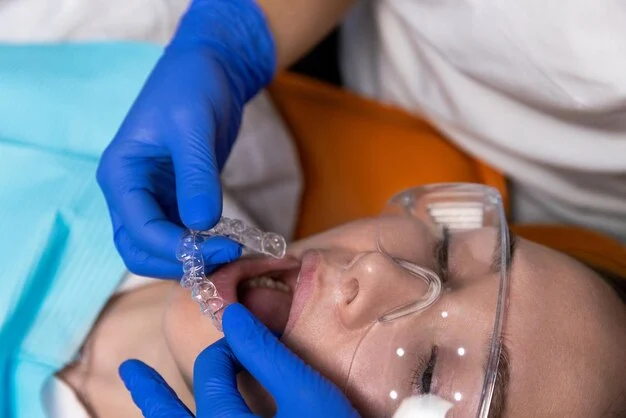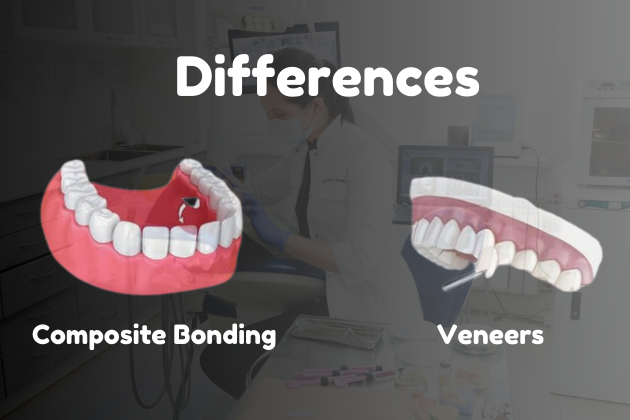Welcome to our comprehensive guide on dental implants procedures! Whether you’re considering dental implants to restore your smile, improve your oral health, or enhance your confidence, we’re here to provide you with all the essential information you need. From understanding the process and benefits to exploring potential risks and alternatives, this blog aims to be your go-to resource for everything related to dental implants. Let’s embark on this journey together and discover how dental implants can transform your smile and quality of life.
Definition and Purpose
Dental implants procedures involve the surgical placement of artificial tooth roots into the jawbone to support replacement teeth. These implants serve as a sturdy foundation for various restorations, including crowns, bridges, or dentures. The primary purpose of dental implants is to restore missing teeth and improve oral function, aesthetics, and overall quality of life.
Dental implants procedures offer a long-term solution for individuals with missing teeth, providing stability and durability comparable to natural teeth. By mimicking the structure of natural tooth roots, implants help preserve bone density and prevent the deterioration of surrounding tissues. Unlike traditional dentures or bridges, dental implants are firmly anchored in the jawbone, offering enhanced stability and comfort.
Types of Dental Implants
Dental implants procedures encompass various types of implants designed to accommodate different clinical situations and patient needs. Understanding the different types of dental implants is essential for determining the most suitable treatment option for each individual.
Endosteal implants
Endosteal implants are the most commonly used type of dental implants procedures. These implants are surgically placed directly into the jawbone, providing a stable foundation for replacement teeth. Endosteal implants typically consist of titanium screws or posts that fuse with the surrounding bone, offering excellent stability and longevity. They are ideal for patients with sufficient bone density and good overall oral health.
Subperiosteal implants
Subperiosteal implants are an alternative option for patients with insufficient bone volume or who are unable to undergo bone grafting procedures. Unlike endosteal implants, which are placed within the jawbone, subperiosteal implants are positioned on top of the jawbone, beneath the gum tissue. These implants consist of a metal framework that rests on the jawbone, with prosthetic teeth attached to the framework. Subperiosteal implants are suitable for patients who require additional support for their replacement teeth but may not be candidates for traditional implant placement.
Zygomatic implants
Zygomatic implants are a specialized type of dental implants procedures used in cases where patients have severe bone loss in the upper jaw. Instead of anchoring the implants into the jawbone, zygomatic implants are anchored into the cheekbones (zygomatic bones), providing a secure foundation for dental restorations. Zygomatic implants offer a viable solution for patients who have been previously told they are not candidates for traditional implant placement due to insufficient bone volume in the upper jaw.
Mini dental implants
Mini dental implants are smaller in diameter than traditional implants and are often used in situations where there is limited space or bone density. These implants are suitable for stabilizing dentures or for replacing small teeth in areas with minimal bone support. Mini dental implants may offer a less invasive alternative to traditional implant placement and can often be placed in a single visit without the need for extensive surgery or recovery time.
Preparing for Dental Implants
Preparing for dental implants procedures involves several crucial steps to ensure the success of the treatment and optimize outcomes for patients. From the initial consultation to the final dental health assessment, thorough preparation is essential for a smooth and effective implant process.

Initial Consultation
The initial consultation is the first step in preparing for dental implants procedures. During this appointment, the dentist will evaluate the patient’s oral health, discuss treatment goals and expectations, and determine whether they are a suitable candidate for dental implants. The dentist will review the patient’s medical history, including any existing health conditions or medications that may affect the implant process. The dentist may take X-rays or perform other diagnostic tests to assess the condition of the jawbone and surrounding tissues. The initial consultation is an opportunity for patients to ask questions, express concerns, and fully understand the implant procedure before moving forward with treatment.
Treatment Planning
Once the patient has been deemed a candidate for dental implants procedures, the next step is treatment planning. This involves developing a personalized treatment plan tailored to the patient’s specific needs and preferences. The dentist will consider factors such as the number of missing teeth, the condition of the jawbone, and the desired outcome of the treatment when creating the plan. Treatment planning may involve coordinating with other dental specialists, such as oral surgeons or periodontists, to ensure comprehensive care. The dentist will discuss the various options available, including the type of dental implants to be used, the timeline for treatment, and any associated costs. By carefully planning the implant procedure in advance, the dental team can minimize risks and optimize results for the patient.
Dental Health Assessment
A thorough dental health assessment is an integral part of preparing for dental implants procedures. This assessment involves evaluating the overall health of the patient’s teeth, gums, and surrounding structures to identify any underlying issues that may impact the success of the implant treatment. The dentist will examine the condition of the remaining teeth, looking for signs of decay, gum disease, or other oral health problems that may need to be addressed before proceeding with implants. The dentist will assess the quality and quantity of the jawbone to ensure it can adequately support the implants.
In cases where bone loss has occurred, the dentist may recommend bone grafting procedures to enhance bone density and create a stable foundation for the implants. By conducting a comprehensive dental health assessment, the dental team can address any potential concerns and develop a treatment plan that is tailored to the patient’s individual needs, ensuring the best possible outcome for dental implants procedures.
The Dental Implants Procedure
The dental implants procedure involves several key stages, from administering anesthesia to implant placement and the subsequent healing period, culminating in the restoration of a functional and aesthetically pleasing smile.
Anesthesia and Sedation
Anesthesia and sedation are crucial aspects of dental implants procedures, ensuring patient comfort and relaxation throughout the process. Before the implant placement work, the dentist or oral surgeon will administer local anesthesia to numb the treatment area, eliminating any potential discomfort or pain during the procedure. In some cases, additional sedation techniques may be used to induce a state of deep relaxation or unconsciousness, particularly for patients with dental anxiety or complex treatment needs. By carefully managing pain and anxiety through anesthesia and sedation, patients can undergo dental implants procedures with minimal discomfort and stress, allowing for a smoother and more positive experience overall.
Implant Placement
Implant placement is the central phase of dental implants procedures, where the artificial tooth roots are surgically inserted into the jawbone to serve as anchors for replacement teeth. The dentist or oral surgeon will carefully position the implants in the predetermined locations within the jawbone, taking into account factors such as bone density, alignment, and aesthetics. The implants are typically made of biocompatible materials such as titanium, which fuse with the surrounding bone through a process called osseointegration. This integration creates a strong and durable bond between the implants and the jawbone, providing stability and support for the eventual attachment of prosthetic teeth. Implant placement requires precision and skill to ensure optimal outcomes and long-term success for dental implants procedures.

Healing Period
Following implant placement, a healing period is necessary to allow for osseointegration to occur and for the implants to become fully integrated with the surrounding bone. During this time, patients may experience some mild discomfort, swelling, or bruising, which can typically be managed with over-the-counter pain medication and ice packs. It is essential for patients to follow post-operative instructions provided by their dental team, including maintaining good oral hygiene practices and avoiding hard or chewy foods that may disrupt the healing process.
The length of the healing period may vary depending on individual factors such as bone quality, overall health, and the complexity of the implant procedure. In general, osseointegration can take several months to complete, during which time the implants gradually become more stable and secure within the jawbone. Once the healing period is complete, the implants are ready to support the placement of prosthetic teeth, restoring function, aesthetics, and confidence for patients undergoing dental implants procedures.
Aftercare and Recovery
Aftercare and recovery are vital aspects of dental implants procedures, ensuring successful healing and long-term implant stability for patients.
Managing Discomfort
Managing discomfort is an essential component of the aftercare process following dental implants procedures. While some mild discomfort, swelling, or bruising may be expected after surgery, there are several strategies to alleviate these symptoms and promote healing. Patients can use over-the-counter pain medications, such as ibuprofen or acetaminophen, as directed by their dentist to manage pain and reduce inflammation. Applying ice packs to the affected area can help reduce swelling and discomfort in the first few days following surgery. It’s essential for patients to follow their dentist’s instructions regarding pain management and to contact their dental team if they experience persistent or severe discomfort after dental implants procedures.
Diet and Oral Hygiene
Maintaining a proper diet and oral hygiene routine is crucial for the successful recovery and long-term success of dental implants procedures. In the immediate aftermath of surgery, patients should stick to soft or liquid foods that are easy to chew and swallow, avoiding hard, crunchy, or sticky foods that may irritate the surgical site. As the healing progresses, patients can gradually reintroduce solid foods into their diet, taking care to chew carefully and avoid placing excessive pressure on the implants. Good oral hygiene practices, such as brushing and flossing regularly, are essential for keeping the implant site clean and free from bacteria that could cause infection or inflammation.
Patients should use a soft-bristled toothbrush and non-abrasive toothpaste to gently clean around the implant area, being careful not to disturb the healing tissues. Additionally, patients may be instructed to use antimicrobial mouthwash or rinse to reduce the risk of infection and promote healing. By following a balanced diet and maintaining proper oral hygiene, patients can support the healing process and ensure the long-term success of their dental implants procedures.
Follow-up Appointments
Follow-up appointments are an integral part of the aftercare and recovery process for dental implants procedures. These appointments allow the dental team to monitor the healing progress, assess the stability of the implants, and address any concerns or complications that may arise. During follow-up appointments, the dentist may take X-rays or perform other diagnostic tests to evaluate the integration of the implants with the surrounding bone and to ensure that the prosthetic teeth are functioning correctly. The dentist will provide guidance on oral hygiene practices, dietary restrictions, and any necessary adjustments to the patient’s treatment plan.
Regular follow-up appointments are essential for maintaining the long-term health and stability of dental implants and for addressing any issues that may arise promptly. By attending follow-up appointments as scheduled and following their dentist’s recommendations, patients can ensure the success of their dental implants procedures and enjoy a lifetime of healthy smiles.
Conclusion
Dental implants procedures offer a transformative solution for individuals with missing teeth, providing not only functional restoration but also enhanced aesthetics and improved quality of life. From the initial consultation to the final restoration, each step of the implant process plays a crucial role in ensuring successful outcomes for patients. By carefully preparing for treatment, selecting the appropriate type of implants, and following post-operative instructions, patients can enjoy the benefits of a strong, stable, and natural-looking smile for years to come. Dental implants procedures are not just about replacing missing teeth; they are about restoring confidence, restoring oral health, and restoring the ability to enjoy life to the fullest. With advancements in dental technology and techniques, dental implants have become a reliable and predictable option for tooth replacement, offering patients a long-term solution that feels and functions like natural teeth.
FAQs
How long do dental implants last?
With proper care and maintenance, dental implants can last a lifetime.
Are dental implants painful?
The dental implants procedure is typically performed under local anesthesia, minimizing discomfort during the surgery. Some mild discomfort may be experienced during the healing process, which can be managed with pain medication.
Can smokers get dental implants?
While smoking can increase the risk of complications and implant failure, smokers can still be candidates for dental implants. However, quitting smoking or reducing tobacco use can improve the success rate of dental implants procedures.











